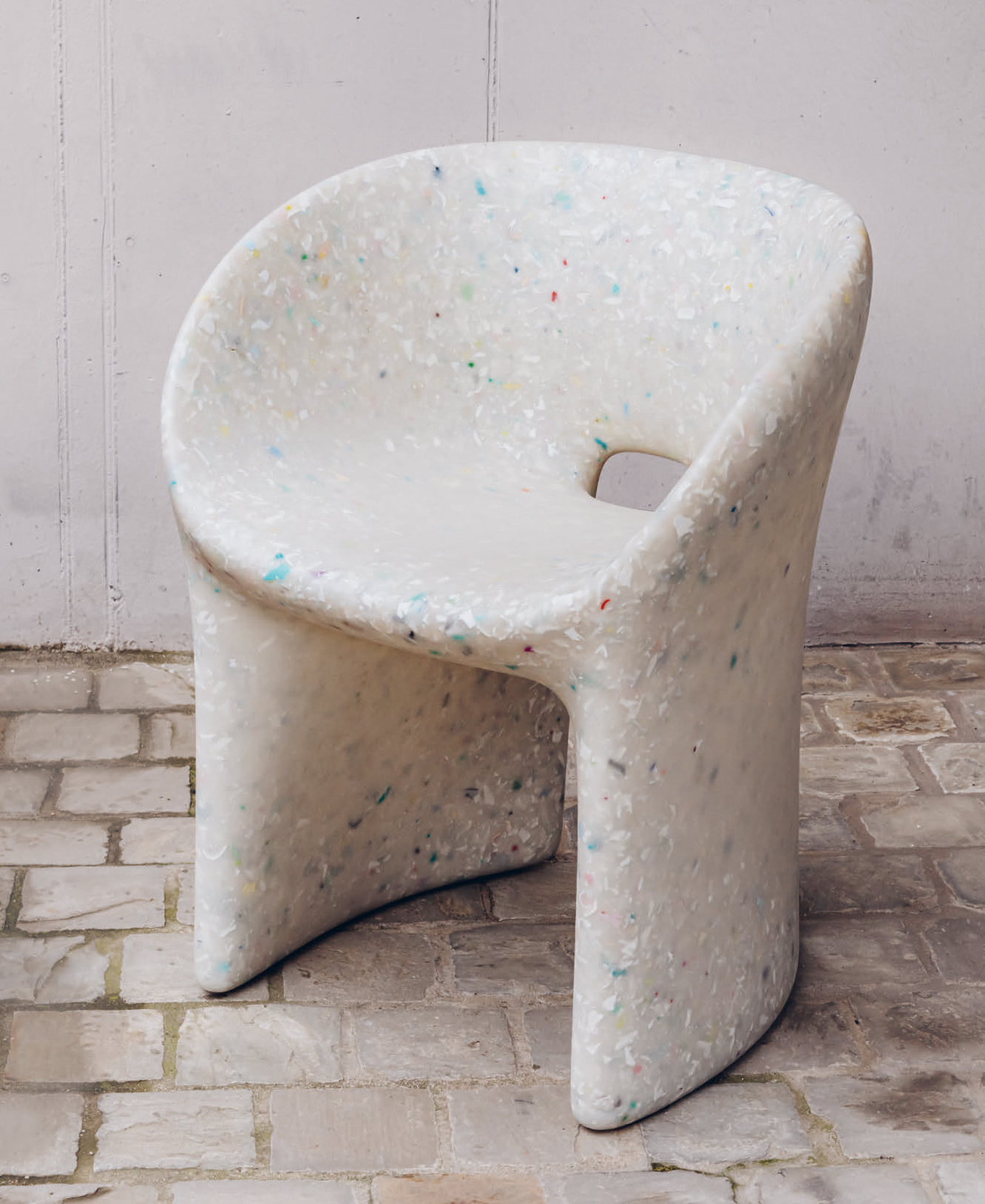
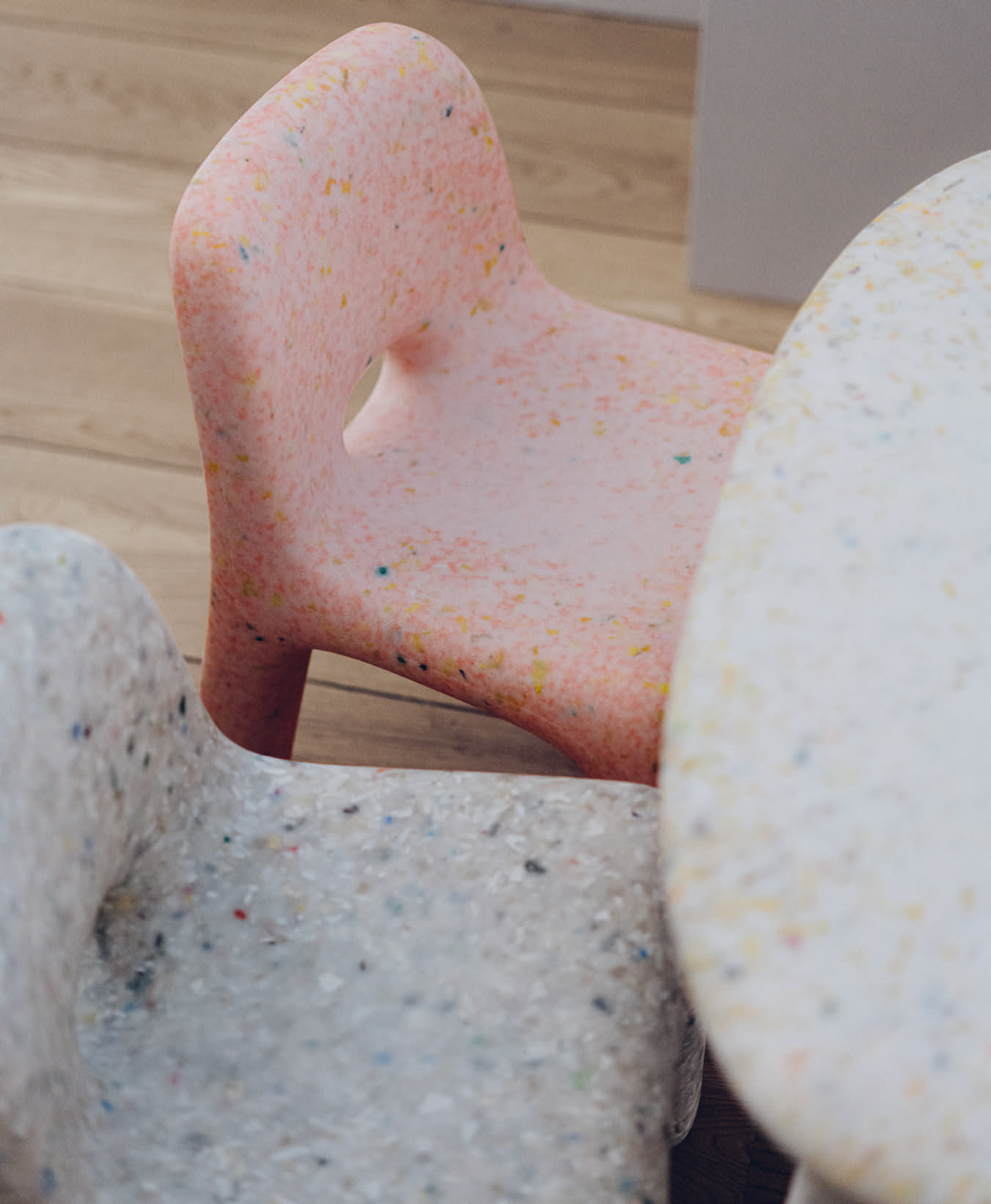
Plastic can be found in every crack and crevice of our world. It is one of the most symbolically charged issues surrounding the climate crisis. The trend is towards avoiding plastic. But just as we can’t eliminate it from everywhere on earth, we can’t erase it from our minds as we consider the future.
Take a seat with the founders and designers of ecoBirdy, Vanessa Yuan and Joris Vanbriel, who have the aim of making the most—and best—of it.
It’s a grey day in Antwerp, shrouding the city in rain. Joris takes a more accurate and pragmatic view: “Aluminium grey. Best weather for a hard-working day!” and adds, “It brings positive energy to work!” with a grin. Headlines across Belgium are seething with the current issue of streamlining the agricultural sector to cut carbon emissions, alongside international news reports that global heads of state have finally pledged to take stronger action to protect the oceans from existing and future threats. Vanessa has come to the office today on her city bike. The studio is “rather messy. We have currently some last-minute projects that came in.” They tackle my questions together, both sipping lemon ginger tea.
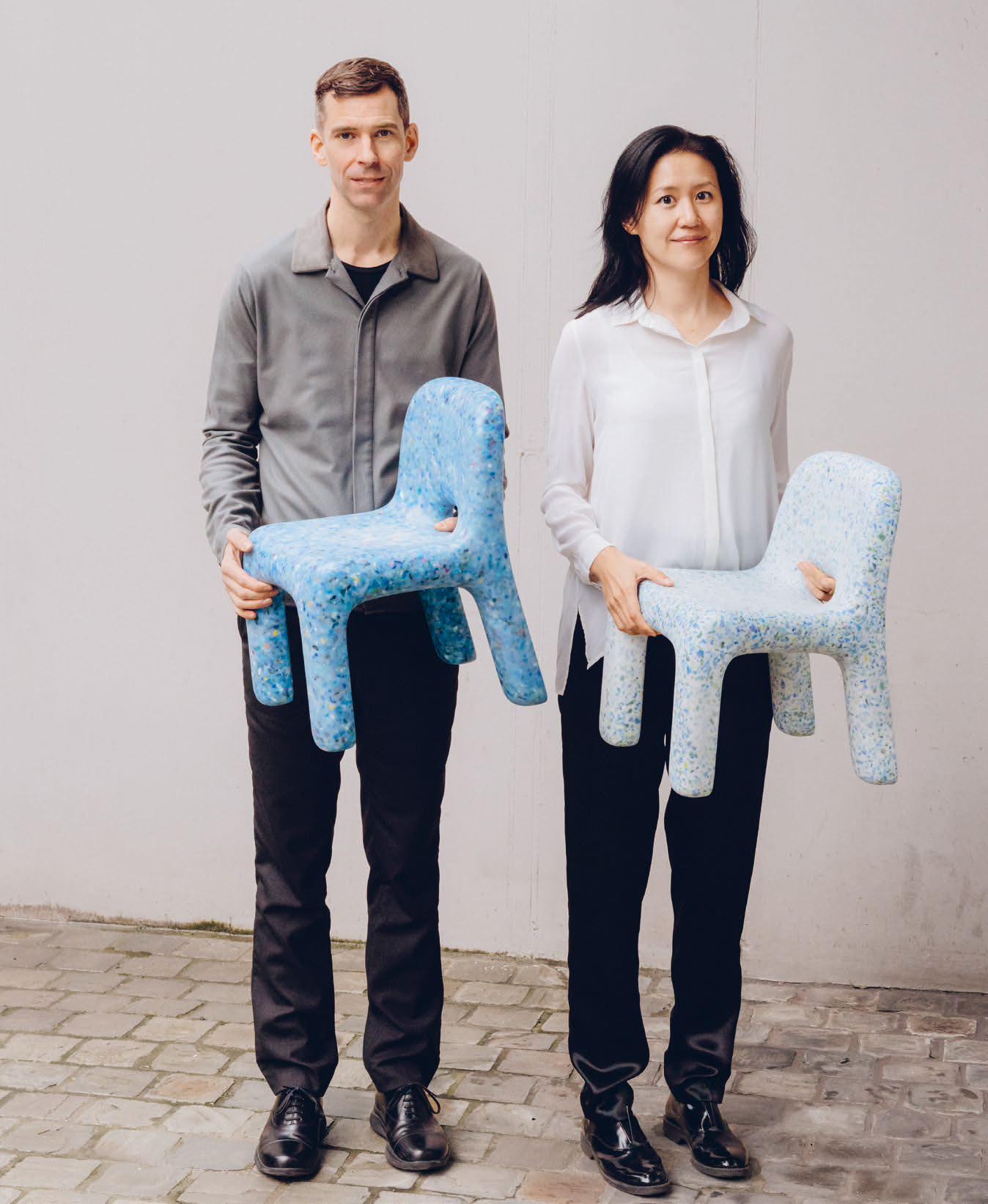
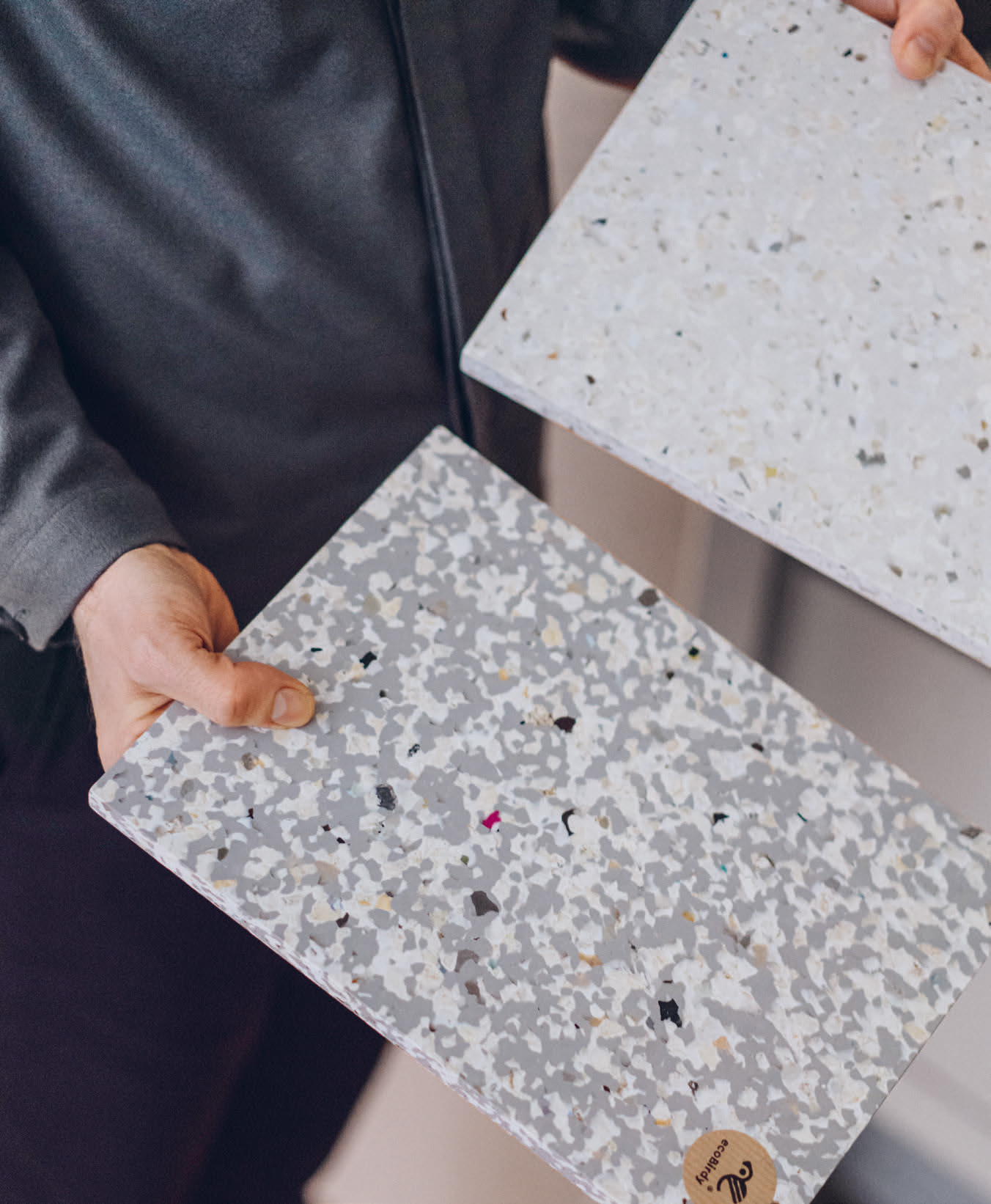
To begin with, how would you explain ecoBirdy’s mission to a six-year-old child?
J
V
We turn things that are broken or no longer used into other beautiful things. For example, some broken toys turn into a little chair that you can sit on.
V
Y
How to explain this to the kids? That’s the exact question we had before we started the school programme (ecoBirdy’s schools programme educates and informs about the circular economy). Initially, we thought about presenting some images of plastic waste polluting our natural environment, but we soon realised that showing them an image of a plastic bag floating in the ocean would be less effective than showing them something they know well: toys. Therefore, we made our storybook as a story based on our research and the process of recycling toys.
J
V
It makes us beyond happy that children like our story and tell their parents and friends about it. We have heard from parents that their kids have started to collect waste when they’re playing outside, trying to recycle and reuse it. They are also telling their friends how important it is not to simply throw everything away, but to think about how to reuse it. Some parents were also told to recycle more by their children. This is the best feedback we could get!
-
-
-
-
What drew your attention to plastic toys in the first place?
J
V
Prior to the launch of ecoBirdy’s debut collection, we spent two years conducting very intense research into the application of plastic in consumer goods and how to recycle plastic sustainably. During our research, a UNEP (United Nations Environment Programme) report caught our attention. It seems that toys are the consumer product sector that is the most plastic-intensive. Plastic toys are nearly 100 per cent plastic by weight and have a short lifespan, which gives rise to an absolute necessity to recycle them at the end of their life cycle. After delving into the subject further and learning that most recycling centres didn’t accept plastic toys at that time because of the complexity and low cost-effectiveness of the process, we decided to improve the current technology.
-
-
-
-
Where do you get the plastic toys for your recycling process?
V
Y
We got toys for recycling through our school programme and our European recycling partners. On our school visits, we asked the students to collect any old and unused plastic toys and put them in our ecoBirdy container. These toys were then upcycled into our design furniture pieces. But the main purpose of our school programme is not to collect a huge amount of plastic toys. The most important thing for us is to make the younger generation aware of recycling and reusing materials. Today’s children are tomorrow’s adults. We believe that starting with the youngest can have the biggest impact on our earth’s future.
J
V
We also work with other companies, and in those cases we create a special edition of our products to amplify the message of the collaboration. This allows us to highlight the importance of recycling at every stage, including within the industry. It was the case with our collaboration with Mustela in 2021 and the limited edition of Charlie Chair, made with manufacturing waste from Quut, launched in December 2022.
-
-
-
-
And what about transforming plastic waste into something new? Child’s play or challenging?
V
Y
Transforming plastic waste into something new isn’t difficult; there are many applications that were already in existence before ecoBirdy. But our goal is to make something that is not only new, but also beautiful, functional, well-designed and easily recycled once again.
J
V
It was quite challenging to create the look we wanted for high-quality design pieces that were recognisable as recycled objects. The technical development was very demanding. But the most difficult part was to change the perception in people’s minds, convincing them that waste material can be transformed into a beautiful and high-quality design object and explaining to them why doing so is important and worthwhile.
V
Y
The same goes for our production partners. It took some time before they could see the feasibility of such an ambitious project, because they had become so used to working towards more standardised and less specialist results over the previous decades.
J
V
Recycling plastic waste in the way that we do is not the simplest process; it requires accurate sorting and is not very economically efficient. During production, there are significant manual and machine operations involved. Ever since we had the idea of making ecoBirdy, we have been working intensively on developing, testing, engineering and designing to make our products safe, ergonomic, comfortable, functional and, most importantly, aesthetically attractive—and entirely recyclable.
-
-
-
-
Along this journey, you have developed your own material formula. Tell me about ecothylene®.
J
V
ecothylene® is the process and material we developed and patented. It is made of 100 per cent recycled plastic. Thanks to the sorting accuracy during the recycling process, the material makes it possible to create colourful pieces without adding any resin or additional pigments. It is completely free from any harmful substances and 100 per cent safe for use by children—and adults too, of course. Besides being entirely made of recycled plastic, it is also fully and easily re-recyclable.
-
-
-
-
You already mentioned collaborations with companies. Your portfolio includes products such as the Frost Table, made from internal parts from discarded refrigerators. Is it easy to get access to companies’ waste?
V
Y
We often receive waste from companies out of the blue, accompanied by requests for solutions. Surprisingly, most companies have very little knowledge concerning their own waste. After our analysis, we often discover the material composition is different from what they told us, or from what they’ve been told by their suppliers.
J
V
We believe working with companies can make a bigger impact; in order to build a better planet, we must work together. ecoBirdy’s goal is to find a sustainable solution for companies’ waste with a tangible outcome.
V
Y
In our current economic model, companies merely focus on making and selling new products. Companies will plan R&D budgets for their products, but not for their waste. Many may think that ‘putting work into processing the waste’ is a waste in itself. Therefore, many products are designed and developed for manufacturing convenience, but are challenging to recycle.
J
V
Today, with the UN’s sustainability goals, more and more eco-conscious consumers are starting to care about how brands deal with their waste. This change is helping us to convince more companies to think about regenerating their unavoidable waste.
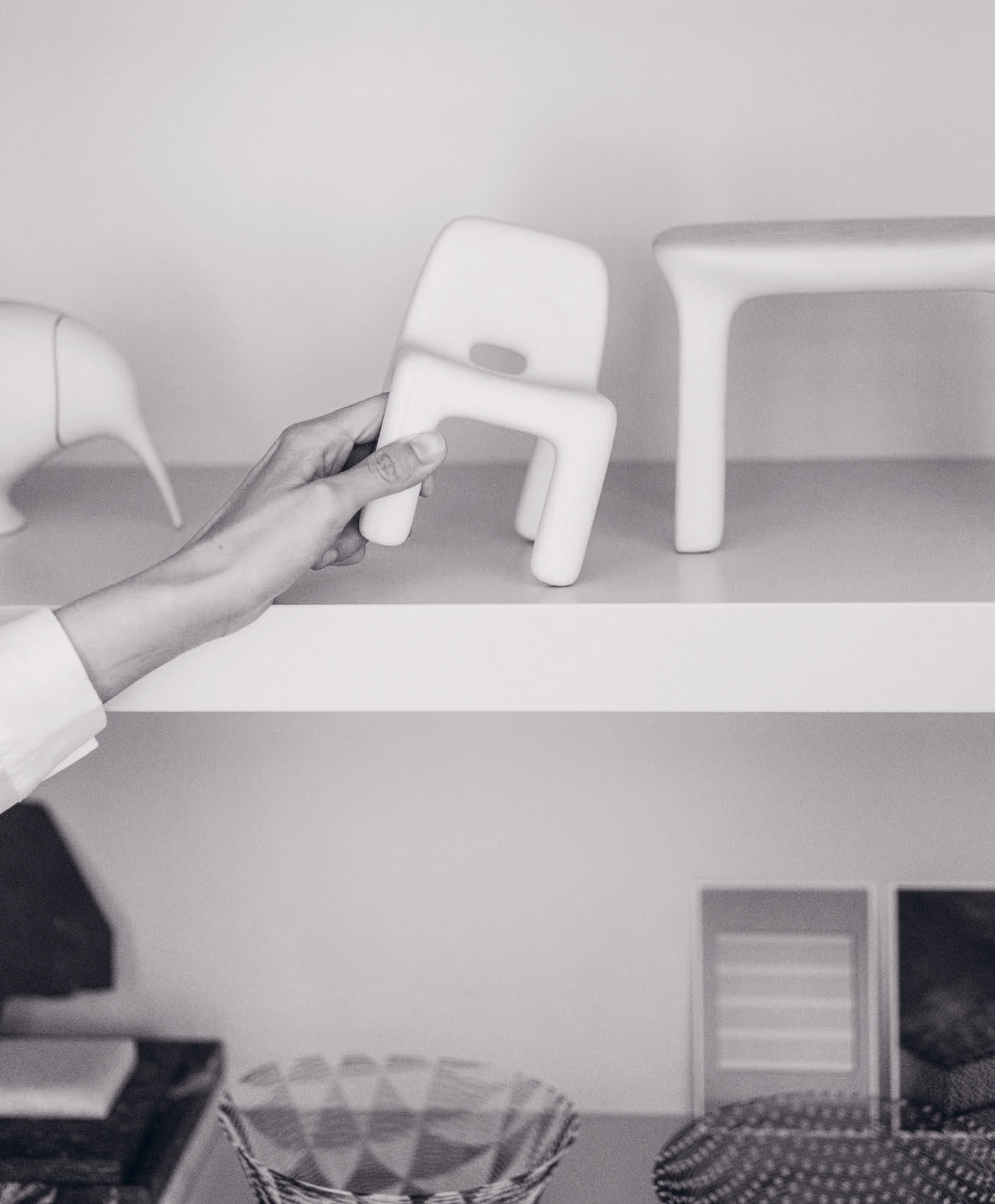
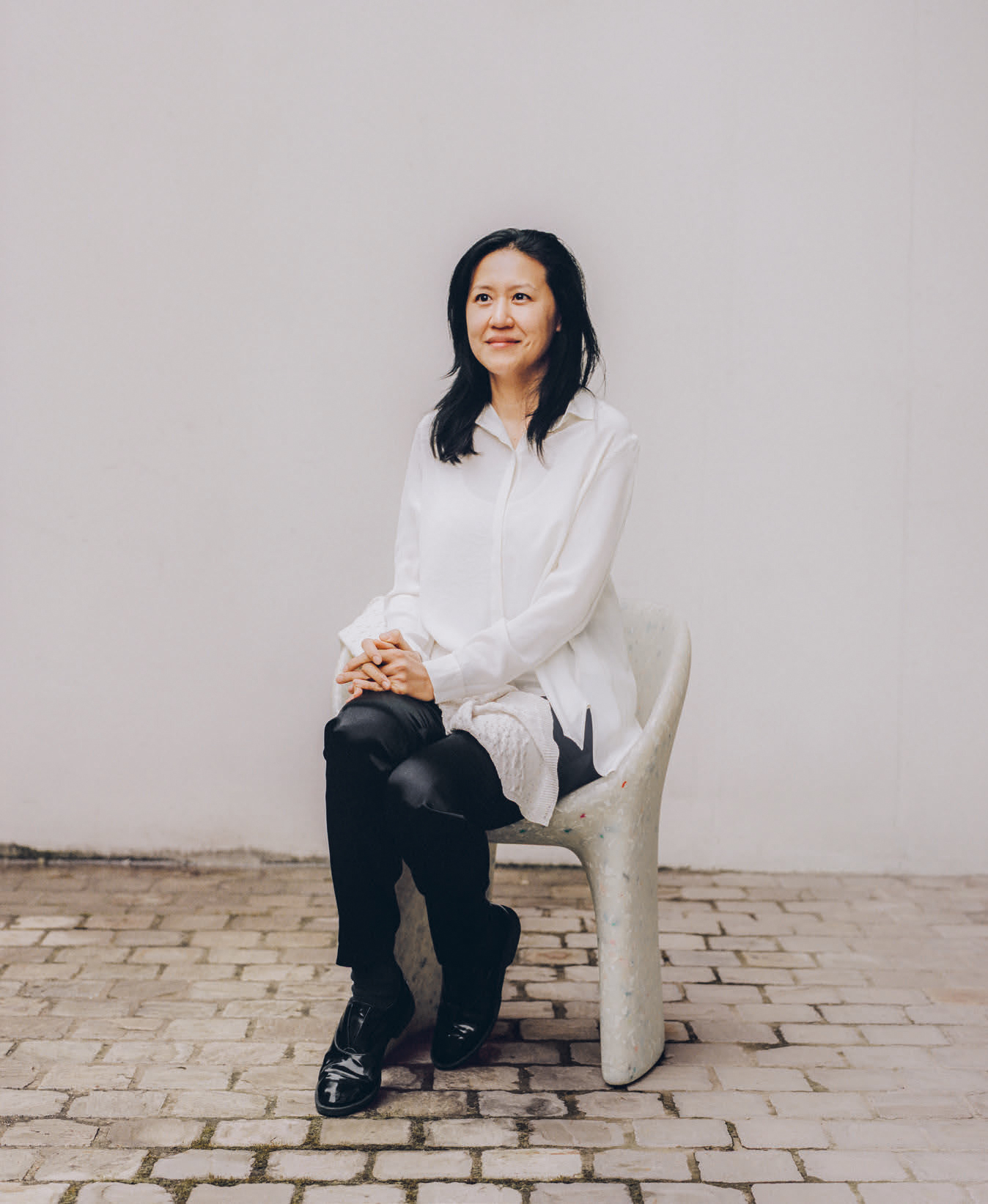
“Birdy stands for a healthy future of our nature, where
birds will be able to fly freely and live happy lives.”
ecoBirdy took off in 2016 as a two-year research project, co-funded by the European Union Commission, on plastic consumer goods and sustainable recycling of plastic toys. The results were a colourful array of designer children’s furniture with exuberant names like Charlie Chair Strawberry and Luisa Table Party. The products represent a sophisticated patented system that starts with the collection and recycling of old unwanted plastic toys and their recycling, and finishes with furniture design and production. ecoBirdy’s debut collection for children received five international awards and was added to the permanent collection of the Young Victoria & Albert Museum, scheduled to reopen on 1 July 2023. But ecoBirdy is more than a designer brand for little people; the portfolio has grown to include a furniture collection for adults and tableware, proving that upcycled plastic waste can fit any needs. ecoBirdy is based in Antwerp, Belgium.
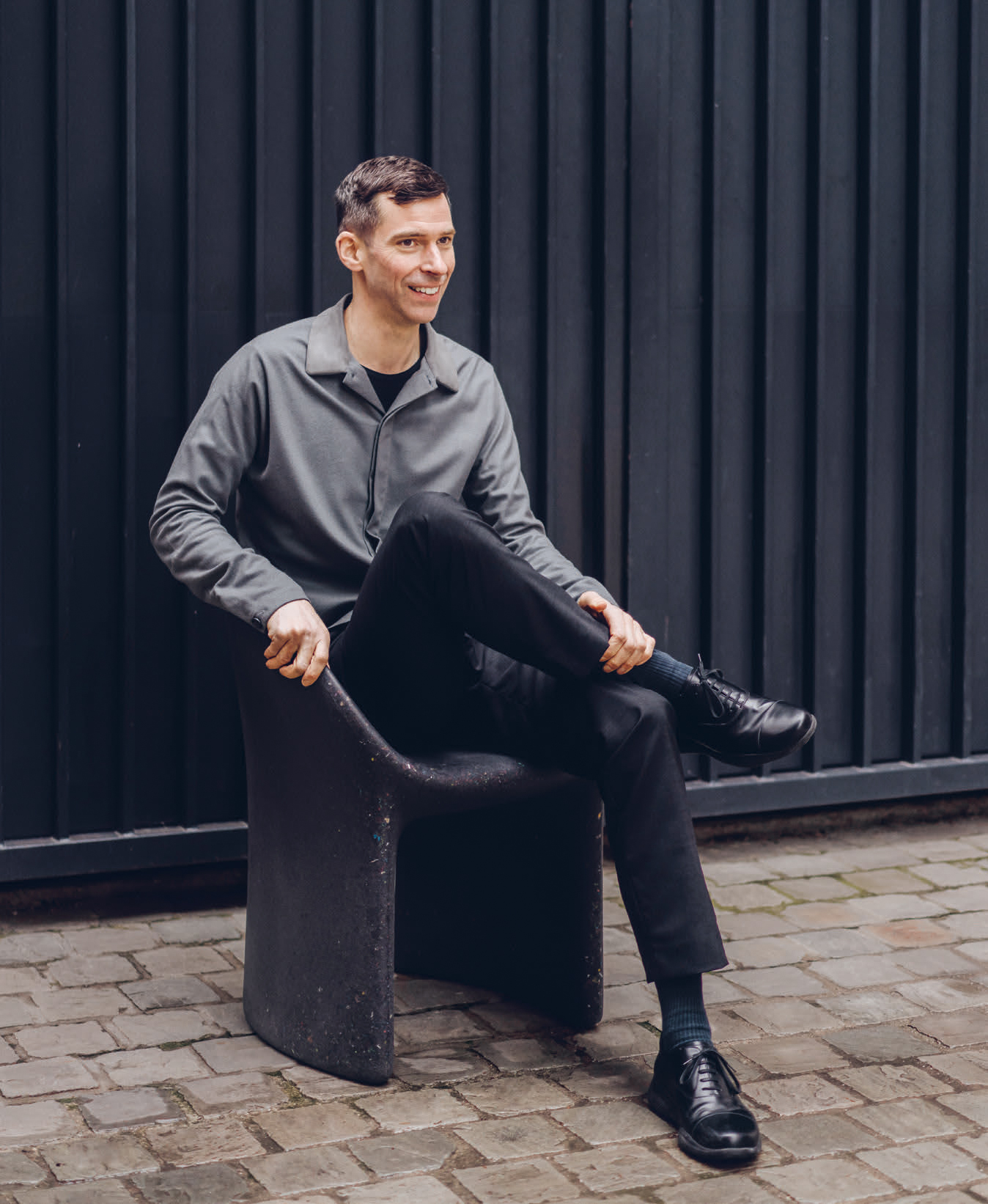
“Circular design generates a completely different
approach to product development. A concept must
go beyond the point of use, functionality and style.”
“Easy to remember and pronounce” was the simple watchword for choosing the brand name. The first few minutes of the brainstorming session quickly transformed the word ‘eco’—a given—into ‘ecobird’, and the very next idea was ‘ecobirdy’. The name’s two elements play a core role in the brand: “Eco stands for ecological. We care for our environment. We think it’s very important to respect Mother Earth’s precious resources without creating unnecessary waste.” And ‘birdy’? “90 per cent of seabirds today have plastics in their stomach. ‘Birdy’ stands for a healthy future for our natural world, where birds will be able to fly freely and live happy lives.”
So can we say that plastic is good—as long as we treat it differently in our economic cycles?
J
V
Our message is that the resources of our planet are precious. If we use any, we need to make the most and best of them.
V
Y
Plastic is a versatile material. A material doesn’t have moral values; only the people who use it have. Plastic is a great invention in human history. It’s a smart material that you can form into any shape, and it has excellent properties. It transports water, preserves food, and plays an important role in the medical sector. As for material applications, it has a lot of advantages; it’s light, colourful, low-energy to produce. Most importantly, and perhaps this is what makes it so guilt-ridden, it’s easy to use in mass production. So it’s not only about plastic as a standalone material; in our opinion, we need to create a different cycle in the entire economic system in order to continue living in a civilised society.
-
-
-
-
Your products are meaningful and relevant for our planet. How could we help consumers to be more aware of sustainable products?
J
V
Most sustainable products have a transparent, traceable record. Always read the material tag and check where it’s made. Who are the people behind the brand, and is the brand certified? It can be challenging today to distinguish genuinely sustainable products.
V
Y
We thought about the solution of having two price tags on every product: one price shown in currency, and another price shown as the cost to the environment. It’s then up to consumers to decide the value and environmental impact of their purchase.
-
-
-
-
Today the word sustainable is wearing thin from overuse. What makes something truly sustainable?
J
V
We believe that truly sustainable products mean high-quality and long-lasting pieces, made from eco-friendly and recycled materials that are also entirely, and easily, re-recyclable. The product itself must be well designed, so it creates the practical or emotional need to keep it for a long time.
V
Y
People have become more aware of environmental issues, the importance of using authentic materials and having socially responsible production. These values have become the fundament for defining product categories and market positions, and how consumers perceive premium quality. Gaining awareness of the impact of daily actions and ‘post-product life’ is also something that will contribute to creating a more sustainable and conscious society. We recently produced a special edition of our Frost Table by recycling 5,825 daily contact lens blister packs. This shows how much difference can be made by the simple choice of recycling the packaging instead of throwing it away with general waste.
J
V
It was always our aim to create high-quality design pieces that could be recognised as the result of recycling and as beautiful and good products at the same time. We believe that we could change the perception of awareness, only if we can turn the waste into highly appreciated items.
-
-
-
-
Let’s scale up your business idea: What needs to change fundamentally to arrive at a more sustainable path?
V
Y
In our opinion, climate change and other global environmental problems will not be solved by a change in one single industry. They require a totally new methodology in the entire supply chain and economic system. Therefore, ecoBirdy presents not only new products, but research and new solutions, too. We ultimately want to connect companies and lead them to a more sustainable path.
J
V
Circular design generates a completely different approach to product development. A concept must go beyond the point of use, functionality and style. The environment must be considered and a balance of all those aspects should be reached.
V
Y
We want ecoBirdy to be an example of the circular economy and a source of inspiration. Children are the future, and we must make every effort to create a better world for them. We want to inspire them and make sustainability understandable for them as well.
-
-
-
-
How do political policies in Belgium deal with the issue of waste and recycling?
J
V
On a European scale, Belgium performs well in environmental reports; theoretically, the plastics recycling rate is one of the highest among the EU countries. On the other hand, we are still much in need of a better solution for domestic organic waste.
-
-
-
-
And what can we learn from the kids attending your school programme?
V
Y
Kids learn faster and understand better than we think. On the school programme tour, after we’d explained the recycling process from the storybook, a toddler pointed to a small particle in the Charlie Chair with his tiny finger and exclaimed excitedly, “There’s my toy truck!” That’s how we knew that his little mind had made the connection. His toy truck may still be at home, but he understood that it can become something else if it is recycled.
-
-
-
-
By the way, do you remember your favourite plastic toy when you were a child?
V
Y
I had a lot of LEGO.
J
V
I was a fan of Playmobil, which I used with my brother and friends to bring stories to life. We created everything, like rock concerts or outdoor missions that started from the window on our roof, where our playroom was.
-
-
-
-
What kind of plastic waste would you would like to transform next?
V
Y
Plastic has become a hot topic since we started our first toy project six years ago. There are so many creative solutions. What still bothers me are cigarette butts. Did you know they’re also plastic, and if they get thrown on the street, almost 100 per cent of them end up in our oceans?
J
V
River waste is a big issue that I would like to tackle. In a big harbour city like Antwerp, its impact is particularly visible. Ultimately, it can be defined as pre-ocean waste, as that’s where it will end up unless it’s not removed before then. Finding a solution is challenging, as the waste itself is very polluted and contaminated; its recycling requires a special and dedicated treatment process, which is not viable today. I think it is worth investigating the idea of interrupting the waste stream before it gets to open waters and devising a sustainable solution for its recycling.
V
Y
If resources allow, I would like to work on organic waste. Recycling of organic waste should be maximised; it is the easiest material to put back into the circle, but right now it’s not happening. It’s ridiculous that we put a lot of effort into recycling plastic while organic waste goes to incineration.
-
-
-
-
At the beginning, we invited readers to sit down with you. Now we’d like to close with a personal message from you to our readers.
V
Y
Here’s a small act you can try: Think of every cent of your money as a vote, and every time you need to buy something, you’re voting for the environment, the company’s social responsibility and the country where it is made. It sounds a little bit serious, but try this and you might find you end up with totally different groceries from your usual ones.
J
V
Try to be creative with the materials and objects you already have, and only add items that you think you can have an emotional connection with. That makes your interiors and your life more authentic and more fun.
-
-
-
-
Vanessa and Joris, thank you for your time.
